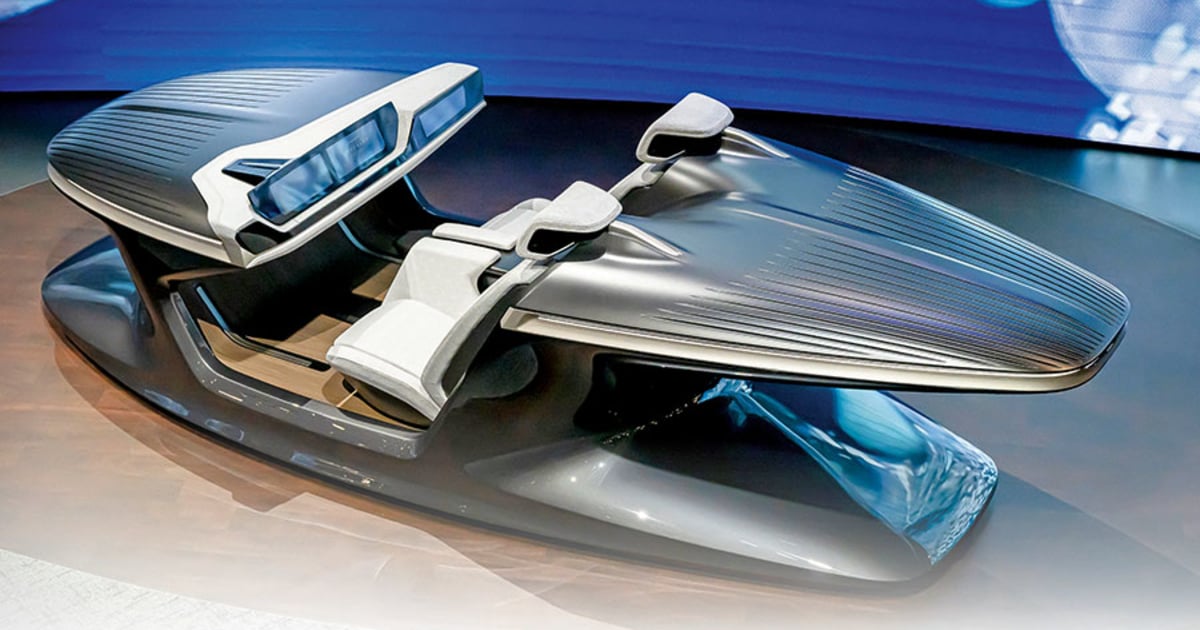
LAS VEGAS — Your commute starts with a greeting from your vehicle, which uses biometrics to identify you. The car’s artificial intelligence-powered personal assistant helps map out the day because it has been synced with your schedule.
From there, the autonomous driving technology allows you to conduct a videoconference and then recommends lunch spots with convenient parking and charging options. Later, you select meditation mode, one of the sensory experiences that sets the mood in the vehicle. Before you return to your residence, the car links with your smart home technology to begin cooling your bedroom.
This could be a typical day for Chrysler customers in the future. Chrysler will be the first Stellantis brand in North America to deploy the automaker’s next-generation cockpit technology.
Stellantis displayed its vision this month at CES in Las Vegas with its two-seat Chrysler Synthesis layout, a conceptual look at the cockpit of the future.
The above scenario illustrates how Stellantis is looking to enrich customers’ lives with software. But the automaker wants to do so in a way that is easily accessible and relevant to their needs at a given moment.
Stellantis CEO Carlos Tavares said the company is creating a user experience grounded in a “one glance, one click” mindset that embraces simplicity. That means it’s moving toward offering more intuitive ergonomics so customers can complete tasks with one glance and one click.
“We understand that software is a way for us to get closer to our customers and to better understand their needs in real time to create experiences that give exactly what they need during these times: peace of mind [and] simplicity so they can focus on living, not on the buttons,” Tavares said during his CES keynote.
Stellantis is “completely refreshing and rebuilding” its software systems, focusing on what kind of experiences customers are seeking because there is “too much friction between our customers and the tech in cars today,” Tavares said.
“Software is enabling us to push past the expected and render the status quo obsolete,” Tavares said. “We need to create innovation that addresses our human aspirations.”
The Synthesis cockpit embodies Stellantis’ goal of presenting technology that is useful. It uses three upcoming Stellantis tech platforms — STLA Smart Cockpit, STLA Brain and STLA AutoDrive — which the company calls “advanced technology for real life.”
Stellantis Chief Software Officer Yves Bonne- font said the CES floor was packed with ideas that are great individually, but he was wary of the potential for motorists to become overwhelmed with features that take awhile to learn.
Bonnefont said the Stellantis mission to simplify is not easy, so the company is making a concerted effort to understand consumers and get their feedback earlier in development.
Bonnefont said Stellantis wants to use AI to “contextualize the feature presentation to the people in the car so that we try and put in front of you what’s relevant in the current context where you are.”
This means the vehicle will take into account how many people are in the car and whether it’s a typical workday or a vacation.
“A little bit like Netflix is trying to propose to you what it thinks you’re going to be interested to watch,” Bonnefont told Automotive News, “we’re trying to propose to you in an easier way to access the things that we think you’re going to be willing to access in the context [of where] you are. And that’s at the core of our new-gen cockpit.”